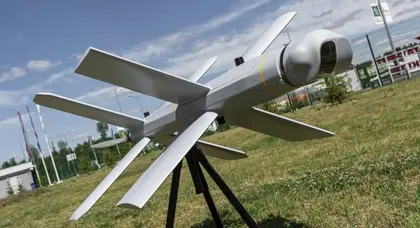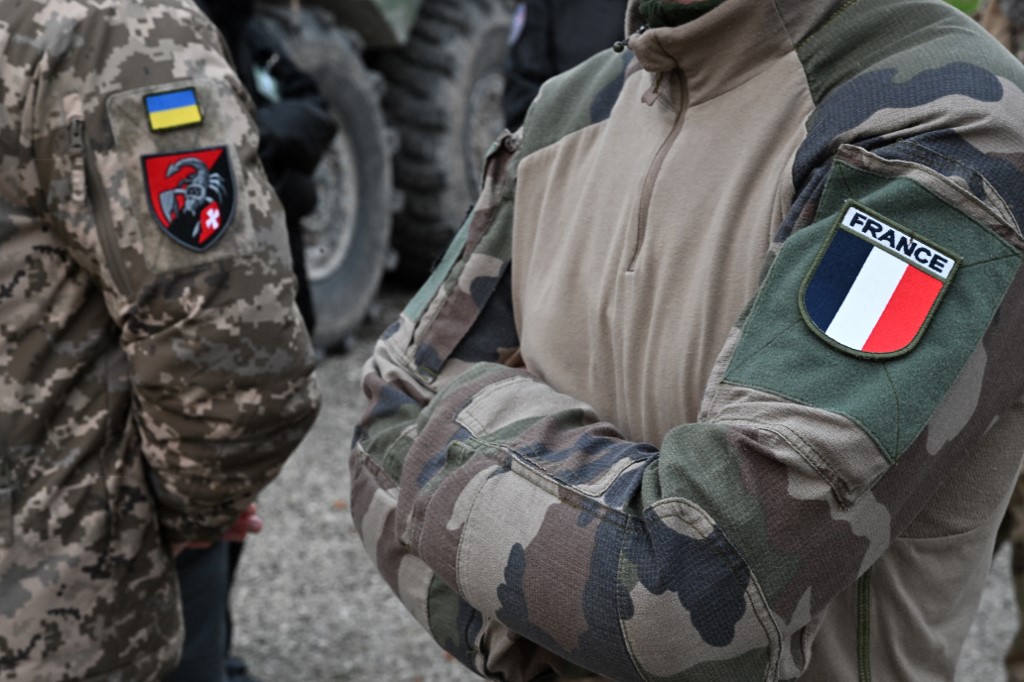What is the Lancet?
The Lancet drone is categorized as a loitering munition or kamikaze drone developed in 2019 by ZALA Aero, the daughter company of the Russian defense industry concern Kalashnikov.
Moscow’s forces have been actively using the munition since the fall of 2022, and more Russian suicide drones have been appearing over Ukraine’s frontline in recent months amidst Ukraine's counteroffensive.
JOIN US ON TELEGRAM
Follow our coverage of the war on the @Kyivpost_official.
By naming their loitering munition “Lancet” after the sharp medical instrument, Russia uses it to engage targets with surgical precision – that was the intention, at least.
It is currently produced in two versions: Lancet 1 and Lancet 3, the difference between the two being primarily their size and subsequent explosive payload.
The Lancet 1 warhead is around one kilogram and the Lancet 3 is three kilograms.
The warheads can either be a “shaped charge” effective against armored vehicles or a high-explosive fragmentation version used against personnel or light vehicles.
The body of the UAV was constructed from lightweight radar-transparent plastic, which makes it difficult to spot in flight. It has an unusual aerodynamic design with Х-shaped wings that provide higher maneuverability and targeting ability.
Capabilities and roles in Ukraine
The smaller Lancet 1 is not capable enough to destroy or even seriously damage heavy armored vehicles but is effective against lightly armored or unarmored vehicles, personnel and towed howitzers.
Ukrainian Partisans Uncover Russian Military HQ in Crimean Resort, Highlighting Civilian Danger
A video circulating on the internet has shown a Lancet drone attacking a German Leopard tank, seemingly rendering it inoperative.
The larger Lancet 3 can destroy or cause serious damage to most heavy armored vehicles used by Ukraine’s forces, and its capability should not be underestimated.
It is highly maneuverable and when used to strike a tank from above on the turret, where the armor is thinner, it is more than likely to pierce it, causing an explosion inside.
The Lancet easily outmatches most infantry fighting vehicles (IFV) as well as mine resistant vehicles such as the US-made MaxxPro.
Both models are launched from special catapults that give them sufficient speed to take off with a maximum cruising speed of 110 kilometers per hour and a terminal velocity of around 300 kilometers per hour while nosediving toward their target. They use mobile launchers that could be redeployed soon after launch, making them difficult to trace.
In September, it was reported that Ukrainian soldiers used HIMARS to engage the launchers.
Flight duration is about 40 minutes, giving it a range of 70 kilometers.
Moscow often uses Lancets in combination with the Orlan-10 Russian reconnaissance drones, which assist in the identification, acquisition and guidance against targets.
In addition, the Orlan-10 can be equipped with a radio repeater which can act as a transponder to control the Lancet over a longer range.
Using the Lancets themselves for aerial reconnaissance allows an immediate strike against a target, thus saving time that would otherwise be spent on launching another UAV.
Experience shows that the Russian forces most often use Lancets to strike targets that are of tactical importance, such as Ukrainian artillery, air defense, radars and command posts – and Ukrainian jets.
Videos showing Lancet drones attacking Ukrainian Air Force (UAF) targets have emerged on the internet, with one from October showing a Lancet crashing into an SU-25 at a Ukrainian air base near Kryvyi Rih.
#Ukraine: A Ukrainian Su-25 close air support aircraft was destroyed by a Russian Lancet loitering munition at the airfield of Kryvyi Rih.
— 🇺🇦 Ukraine Weapons Tracker (@UAWeapons) October 10, 2023
This is the second aircraft known to be targeted on this airfield by Russian loitering munitions. pic.twitter.com/5E2RuBZPNb
Another from September has shown a Lancet drone detonating next to a MiG-29 jet fighter, a highly valuable asset to the UAF.
Very interesting video of a Ukrainian MiG-29 fighter jet based at the Dolgintsevo Air Base near Kryvyi Rih being struck by a Russian ZALA Lancet loitering munition.
— Status-6 (Military & Conflict News) (BlueSky too) (@Archer83Able) September 19, 2023
The airframe appeared to be operational, though it can be concluded from the video that it suffered only minor… pic.twitter.com/jZDYZ5rukq
Russia claims to now equip these UAVs with an AI capability in response to improved Ukrainian electronic warfare (EW) systems, which disabled Lancets by killing the control signal. It is claimed that AI allows the new versions to autonomously discern and destroy targets.
Before launch, the operator loads data into the drone relating to the intended target area. The manufacturer claims that once the Lancet detects the targets, the AI will allow it to differentiate and select a priority objective – an air defense system over an artillery piece, for instance.
Countering the drone
Thus far, the most effective defense against these Russian strike drones seems to be the use of special fencing or ordinary camouflage netting spread on a metal framework.
Last fall, when Russia launched its first Lancets, two such UAVs failed to damage a Ukrainian Т-72 tank because they were stopped by a camouflage net strung above it.
Metal nets reliably protect artillery systems against the Lancet 1. When a drone is already in the air and has spotted Ukrainian targets, the gunners have too little time to move to another position.
The best way out for them is several layers of metal net spread over the artillery system. Sometimes, Ukrainian forces even manage to capture an unexploded Lancet 1 that gets caught in the net.
Even using metal nets, the Lancet 3 is more difficult to cope with because its warhead is more powerful and controlled remotely: The operator can activate it after it strikes the netting. The most effective defense is to combine extensive EW capability with short-range air defense missiles or cannons, machine guns and other firearms.
As reported on Nov. 9 by Militarnyi, Moscow seemed to have developed newer Lancet drones that could detonate before hitting the net, making it an even more deadly threat to Ukrainian troops.
The Lancet has to be considered to be a dangerous smart weapon. Each drone costs $30,000–$35,000, and it can easily destroy or pout out of action multi-million dollars’ worth of a tank, artillery piece or air defense system.
That is why Ukraine specialists study captured Lancets or recover their fragments to help develop and improve its own EW countermeasures.
These recovered parts also enable Ukraine to develop and improve its own UAVs. The war in Ukraine has proven the vital role drones play in the reconnaissance and destruction of enemy equipment and personnel on the modern battlefield.
Drones reduce the risk to personnel, and the cost benefit analysis if even a dozen Russian drones were launched to destroy one target is self-evident.
Effects of sanctions
The US government imposed sanctions on the Russian arms manufacturer ZALA Aero in early November 2023.
“The Department is taking action to further target companies that are complicit in supporting Russia’s war against Ukraine, including a network procuring items in support of the production of the KUB-BLA and Lancet suicide drones being used by the Russian military in Ukraine,” read a US Department of State report.
As the sanctions are still recent, it is currently not known what effects they will have on Moscow's ability to manufacture Lancet drones.
An earlier Kyiv Post report on Russia's use of Shahed/Geran drones has stated the use of Western equipment and components despite the sanctions, lending doubts to the effectiveness of Western sanctions.
Lancet – technical characteristics
The ZALA Lancet is an unmanned aerial vehicle used by Russia as a loitering munition for both reconnaissance and kamikaze strikes.
Length: 1.65 m
Optical system: a thermal optoelectronic and combined targeting system.
Warhead: shaped charge or high-explosive fragmentation warheads. Lancet 1: 1 kg, Lancet 3: 3 kg.
Takeoff weight: 5 kg or 12 kg, depending on the model
Cruise speed: 80–100 kph
Flight range: 40–70 km
Terminal velocity on target engagement: 300 kph
The developers claim the Lancet flies to the designated area in autonomous mode and then scans the area for targets using the detection algorithm. While in this mode, it does not require connection with the operator and is immune to interference.
You can also highlight the text and press Ctrl + Enter







